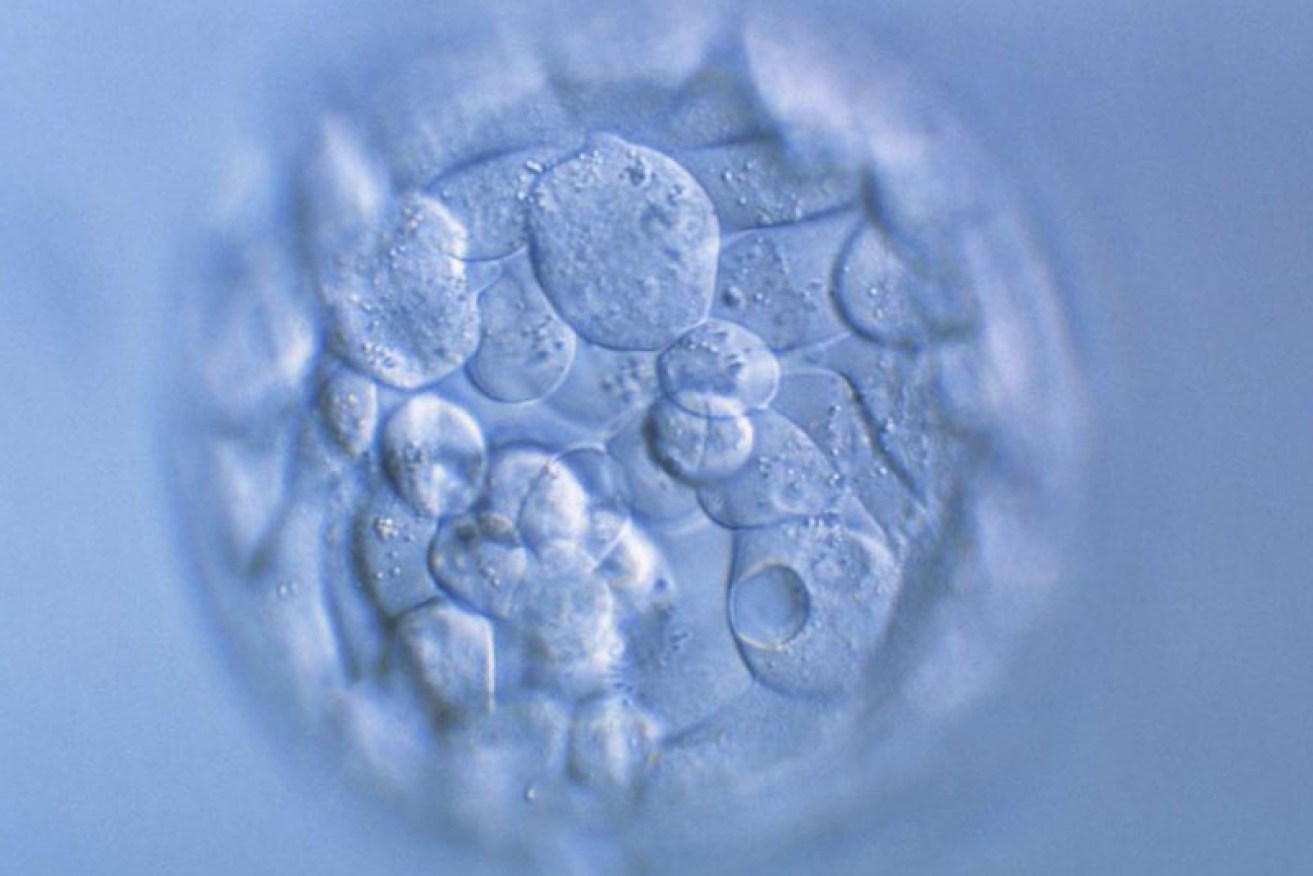Human embryos cultured in lab for up to 14 days

ABC
The human embryo can survive in an artificial environment at least six days beyond the point at which it would normally implant into the uterus.
Two separate groups of scientists today report in Nature and Nature Cell Biology their successful development of human embryos in a petri dish for up to 14 days after fertilisation.
The research teams said the advance shines a light into an unexplored period of early embryonic development.
• Junk foods make up half of children’s daily intake
• Fancy juice doesn’t cleanse the body of toxins
• How food before bed could be harming you
Meanwhile others said the development could open up discussion about the ’14-day rule’; a globally-agreed developmental cut-off beyond which scientific research is not permitted on human embryos.
Human embryos normally implant into the wall of the uterus seven days after fertilisation.
Dr Marta Shahbazi, lead author of the Nature Cell Biology paper, said until now, human embryos had only been sustained in the laboratory for up to nine days after fertilisation.
The ability to observe embryonic development in the laboratory offers a unique opportunity not only to learn how the embryo develops in this period, but to understand why pregnancies fail at this critical junction in development, she said.
“In many cases pregnancies fail at implantation and we don’t know if the problem is in the mother or in the embryo,” Dr Shahbazi, from the Mammalian Embryo and Stem Cell Group at the University of Cambridge, said.
“Since we are not providing any maternal factors, we can study just the effects at the level of the embryo.”
Using an approach tested in mouse embryos, the researchers cultured the embryos in a medium that did not actually contain any maternal cells or tissues.
“The key here was that we basically let the embryos develop on their own, without providing any kind of maternal tissues or maternal interaction,” Dr Shahbazi said.
Period of human development never understood before
Professor Patrick Tam, the deputy director and head of the Embryology Unit at the Children’s Medical Research Institute, said the study was a “major step forward in understanding a period of human development that has never been understood properly before”.
He said until now, our understanding of how the human embryo develops after implantation has been derived either from mouse embryology studies or old studies that took static pictures at various stages along the way.
“You can reconstruct from a snapshot but to see it actually happening would reveal a lot more information,” said Professor Tam, who was not involved in the current research.
However, research embryologist Dr Melanie McDowall from the University of Adelaide questioned whether embryos cultivated in the absence of maternal factors truly represented development that would normally happen inside the mother.
“If your justification for doing experiments like this is to look at what happens from day seven to day 14, how biologically accurate is that going to be,” Dr McDowall said, pointing out that technology could soon supersede this need.
“We’re probably a few years off being able to develop kind of diagnostics where we can see what’s happening in [the uterus], and that’s going to be more realistic and give us a better idea what’s happening.”
Revisiting the 14-day rule ‘needed’?
Meanwhile, studies of human development in vitro are on a collision course with an international policy that limits embryo research to the first two weeks of development, argue a group of scientists in a separate commentary in Nature.
They said the 14-day cut-off was chosen not for any moral significance, but rather “a public-policy tool designed to carve out a space for scientific inquiry and simultaneously show respect for the diverse views on human-embryo research”.
“Now that the culturing of human embryos beyond 14 days seems feasible, more clarity as to how the rule applies to different types of embryo research in different jurisdictions is crucial,” the editorial’s authors wrote.
Professor Martin Pera, professor of stem cell science at the University of Melbourne, agreed the 14-day rule “needs to be revisited”, as this period of development is relevant to such conditions as early pregnancy loss and placental defects.
“But in order to make sure the public understands this, the benefits that may accrue from this — and what we’re not trying to do which is grow a little baby — it need a careful phase of discourse and review of regulations,” Professor Pera said.
Professor Henry ‘Hank’ Greely, director of the Center for Law and the Biosciences at Stanford University, was “not convinced” about revisiting this limit.
“I do not see a politically, or, for most people, morally acceptable line after 14 days,” he said.
“Given the questionable scientific value of the research, no case has been made for even revisiting the line, let alone changing it.”
– ABC








